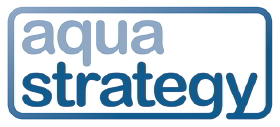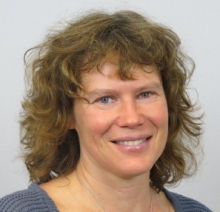Issue:
Research in Sweden on pharmaceuticals in municipal wastewater includes a project aimed at providing operators with a framework for deciding what approach to take. Keith Hayward spoke with researcher Christian Baresel about the project as it nears completion and heard his views on aspects of a viable strategy for providing treatment to remove these pollutants.

As one of six projects looking at pharmaceuticals in municipal sewage funded by the Swedish Agency for Marine and Water Management, ‘Systems for the purification of pharmaceutical residues and other emerging substances’ set out to make a contribution on this issue by giving operators the tools and information they need to decide on a plan of action.
‘Our main goal was to prepare material that is provided to treatment plants so that they can decide if they need additional treatment and how this could be made for their specific plant, as each treatment plant has different set-ups,’ explains Dr Christian Baresel of IVL Swedish Environmental Research Institute.
That initial outlook has been overtaken somewhat by the government’s instruction to the Swedish Environmental Protection Agency to prepare a report by May next year as the country moves towards likely national action. ‘There wasn’t even a discussion about a regulation when we started with our work,’ comments Baresel.
Even so, the project is set to be able to contribute within this timescale. Almost all experimental work will be finished by September, with the aim of issuing a final report by the end of next February, explains Baresel. Ongoing work includes, for example, undertaking Life Cycle Assessments and Life Cycle Cost Assessments for different treatment plant systems and sizes to help in the identification of the most sustainable solutions.
Anticipating emerging technology options
IVL is one of the project partners, the others being KTH Royal Institute of Technology and the utilities Syvab and Stockholm Vatten. One of the early contributions of the project was carry out a review on pharmaceuticals and to issue a report on this. The review set out a number of recommendations, in areas such as what the effluent quality aims should be, the prioritization of substances, how to approach samping and analysis, and removal technology option. The final project report will add to this with the findings of the project activities.
Technologies are available for removing pharmaceuticals from sewage, especially use of ozonation or activated carbon as are being applied in particular in Germany and Switzerland. The question is of how to apply them as part of a wider strategy.
One of Baresel’s strongest messages is that operators should keep in mind that technology alternatives are emerging all the time. The aim is that the outputs of the project will help support them in this thinking. ‘We hope that with our materials we will get flexible installations that are prepared for future upgrading,’ he says.
As an example, Baresel mentions developments with activated carbon, including magnetic activated carbon (MAC), modified activated carbon (ModAC), and activated carbon produced from biomass, including the sewage plant’s own sludge (BAC). The latter could potentially offer cost and environmental benefits, since transport and carbon regeneration costs could be avoided. Plants could be built initially to use current commercial carbons, but keeping in mind the time when the sludge-based alternative is viable. ‘It should be constructed in a way that can easily be switched,’ he comments.
Baresel adds that production of carbon from sludge is currently being tested on sludge from two treatment plants in Stockholm, with the intention of including some details of the experiences in the project report. ‘We are trying to have some real figures there, not just some theoretical ones,’ he says.
Another emerging technology option is the possibility of using targeted enzyme-based treatments at sewage treatment plants, especially where there is a hospital upstream of the treatment plant. The tailored enzymes could, for example, be used to break down antibiotics. ‘We have been working with a company now for about one year in our research facility, and we will probably go for a full scale plant at one of the treatment plants after the summer,’ says Baresel.
He highlights the need for a flexible approach to solutions further by mentioning the experiences of developing the treatment option for Linköping, where as well as the need to address pharmaceuticals, good nitrogen removal cannot be achieved because it is organically bound to the sludge. Rather than locate ozone treatment as a final treatment step, it is being added as an intermediate step to release the nitrogen for treatment. ‘We put the ozonation there so that we can remove all pharmaceuticals, but at the same time we also crack the organic-bound nitrogen and in that way we can even improve the nitrogen removal,’ he says.
A viable approach to regulation
Other aspects need to be brought together along with the treatment options to create a framework for tackling pharmaceuticals, especially in any new regulation.
One of these is the question of how to deal with the large number of pharmaceutical compounds that exist. ‘In our normal analysis, we have about 42 pharmaceuticals, each representing a different group of pharmaceuticals,’ explains Baresel. This offers a means of assessing the pharmaceutical presence given that there are thousands of possible compounds. ‘It is the ony way it can work,’ he comments. Even 42 may seem like a relatively high number to deal with, but Baresel says he believes this is a workable number, especially since this suite can all be tested for in a single analysis. He cautions against basing screening or regulation on a more limited number, say five to ten compounds. Instead, testing could be carried out for the wider range of compounds at a treatment plant and then the most important ones selected based on the results. ‘It gives a more secure approach,’ comments Baresel, not least because it can affect the treatment selection.
This all forms part of Baresel’s wider message that a risk-based approach should be taken. This means looking at what the actual pollutant load is arriving at each treatment plant. It also means looking at the impact on the receiving waters is. He contrasts the situation at some Swedish locations with a very high dilution to the typical more limited dilution for towns and cities in Germany. ‘Each recipient has a different sensitivity and that is really important to take into account,’ he says. A one-size-fits-all approach is not the way to deal with pharmaceuticals, he believes.
This view opens the way to require action first at treatment plants where there is the highest priority. ‘First of all you can just require that treatment plants that are upstream from drinking water facilities have to be prioritised,’ says Baresel. For example, there are around 25 wastewater treatment plants upstream of Lake Mälaren, Stockholm’s drinking water source, Baresel points out. The next factor for prioritisation would be the dilution factor, suggests Baresel, followed then by the risk screening for compounds, selecting maybe the five of most importance for any particular plant. ‘You could define the regulation in such a way, so you get a uniform regulation which is still site dependent,’ he says.
The sludge question
This offers promise for Sweden as far as the prospects for a way ahead on pharmaceuticals are concerned, but one difference for the country compared to countries such as Germany and Switzerland is that in general wastewater sludge is subsequently used in agriculture. Removing pharmaceuticals from the water runs the risk of increasing the pharmaceutical contnt of the sludge. ‘They cannot be decoupled,’ says Baresel.
‘The authorities in Sweden don’t want to talk about the sludge issue,’ he says. He points also to wider concerns about the cadmium content of sludge, noting that there are already restrictions on spreading sludge in some parts of the country.
These wider issues add weight to Baresel’s initial point about the benefits of designing wastewater treatment plants with future technology options in mind. He also mentions progress that is being made with use of hydrothermal carbonisation of sludge. This offers the prospect of adopting an approach in which pharmaceuticals are destroyed, phosphorus can be recovered, and a high energy product is produced. ‘It makes the whole process really sustainable,’ he says.
So is it possible for operators to expect that changes are on the way in areas such as recycling and energy neutrality and so plan with flexibility in mind? ‘Yes, definitely,’ comments Baresel.
More information
C Baresel et al.
IVL Swedish Environmental Research Institute
Report B 2226, April 2015
Related article: Pharmaceuticals in sewage – the search for a Swedish solution
Keywords:
- Sweden, pharmaceuticals, micropollutants, sewage treatment






